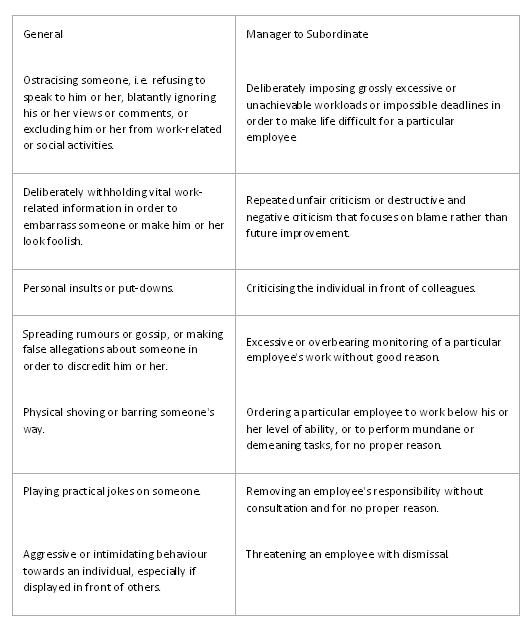When you are considering what sanction to impose under a disciplinary procedure, as an employer you must ensure that your decision is fair and reasonable in all the circumstances.
If the decision does not meet this test, you may be exposed to a claim for unfair dismissal if your employee is dismissed; or a claim for constructive unfair dismissal if your employee resigns in response to the sanction applied.
Once you have reached the decision that an act of misconduct has taken place, there are a number of factors that will influence the next decision as to which sanction it should apply. When considering which penalty would be appropriate in the circumstances, you should take into account the nature of the act of misconduct, the seriousness of its consequences and whether or not the misconduct has occurred repeatedly or is a one-off incident.
Verbal Warning
A verbal warning would be appropriate when dealing with the first occasion of minor misconduct, such as lateness, sub-standard work, appearance/a failure to comply with the dress code, a failure to follow the requirements of the sickness absence reporting procedure or excessive personal use of your email, telephone or internet systems.
First Written Warning
A first written warning is appropriate where further instances of minor misconduct occur after a verbal warning is given, or when you are dealing with the first instance of more serious misconduct, such as:
- unauthorised absence
- a failure to carry out a reasonable instruction
- inappropriate behaviour towards a colleague or customer
- breaches of the your policies and processes, such as minor infractions of the health and safety policy, or breaches of the email and internet policy or
- misuse of company property or equipment.
Final Written Warning
A final written warning should be issued for persistent acts of misconduct where you have already issued the employee with warnings or for a very serious act of misconduct that falls short of gross misconduct, for example:
- persistent lateness
- further breaches of the your policies and procedures following a written warning
- persistent unauthorised absence or
- serious breaches of health and safety rules, even if the incident is a one-off event.
Dismissal with Notice
The ultimate sanction for misconduct or poor performance is dismissal. When taking the decision to dismiss, you must demonstrate that dismissal in the particular circumstances falls within the ‘band of reasonable responses’. This means that you must demonstrate that a ‘reasonable’ employer could have reached the same decision.
Dismissal with notice is likely to be appropriate where a final written warning has been issued for misconduct or poor performance and further acts of misconduct take place or performance does not improve. The final act of misconduct may not be sufficient on its own to amount to gross misconduct, but would justify dismissal when taken together with earlier acts and a failure by the employee to improve or modify his or her conduct.
Dismissal without Notice
In most cases dismissal for a first offence will be appropriate only where the conduct amounts to gross misconduct. Gross misconduct can also justify dismissal without notice. Gross misconduct will arise where the act is so serious that the employment relationship between you and your employee has been irreparably damaged. You should consider carefully whether or not there has been a genuine breakdown in the trust and confidence between the company and the employee. Such a breakdown might occur where you can no longer have confidence that your employee will carry out their duties with honesty and integrity or will perform their role without causing loss or damage to customers or the company. Whether or not a specific act amounts to gross misconduct will depend on the circumstances of the case, including the nature of the employer’s business. Examples of gross misconduct include:
- fighting or physically threatening behaviour
- insubordination (a single act is unlikely to be gross misconduct but dismissal may be justified if, for example, the act is accompanied by offensive language)
- discriminatory conduct, for example racially offensive language
- theft or fraud
- acts of dishonesty, for example falsifying time sheets or
- a breach of the employer’s drug and alcohol policy.
Your Disciplinary Policy
Your staff handbook or disciplinary procedure should list acts that will be regarded as gross misconduct, but it should explain that employees can also be summarily dismissed for something that is not on the list, if this is reasonable in the circumstances. Where disciplinary rules have made it clear that particular conduct will lead to dismissal, it is more likely that the dismissal will be fair.
When did you last check your staff handbook and disciplinary procedure? If they are not fully up to date, get in touch to see what needs to be done to update them. If you have any questions about disciplining or dismissing an employee, call me 0118 940 3032 or click here to email me.


